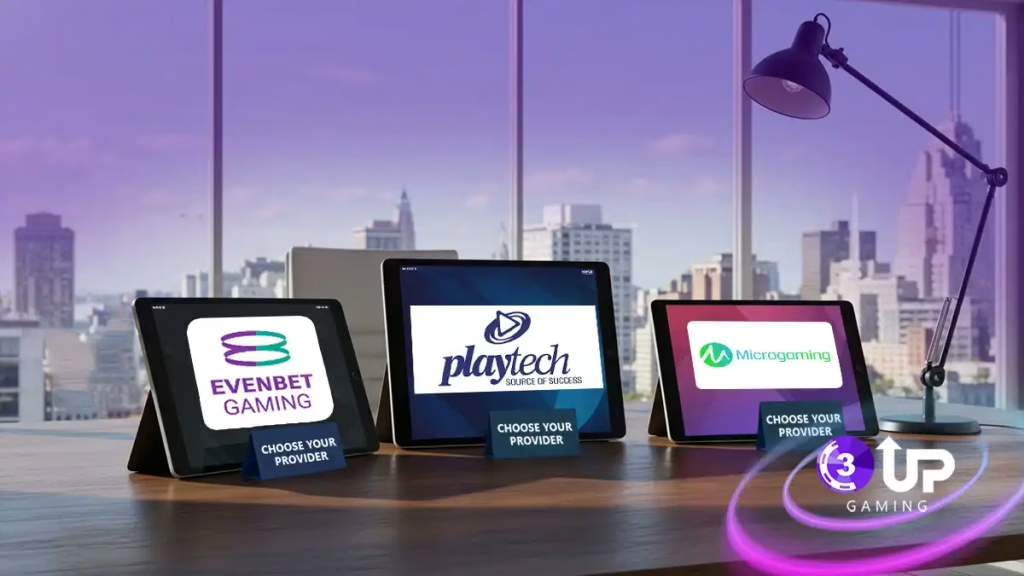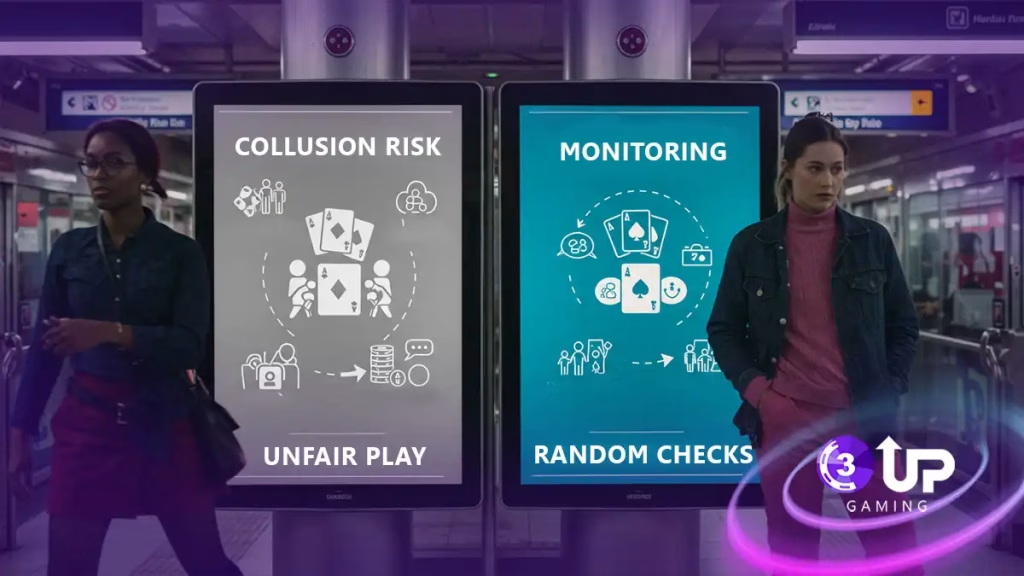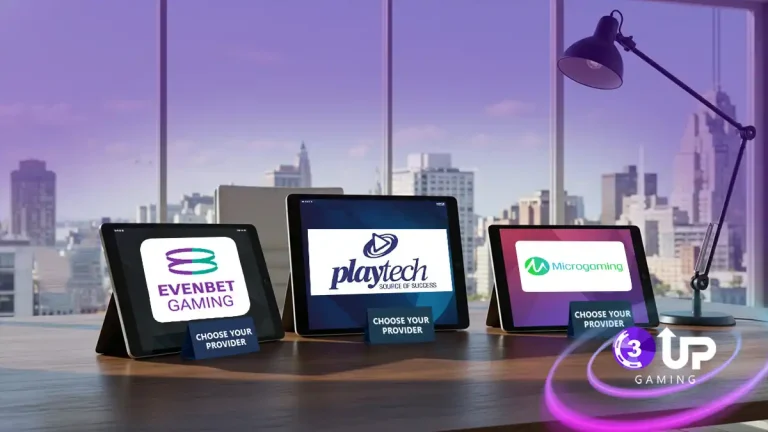Lunch Your Own Poker App with a White Label Solution! Mobile poker is booming, with most players now on their phones. White label poker apps let you jump in fast without building from scratch. This guide walks you through creating a lively poker platform that hooks players, perfect for anyone eager to break into online gaming.
These apps come ready-made, so you focus on branding and player experience. They handle the techy stuff like security and rules, leaving you room to dream big. Our poker platform guide lays out the steps. Grab our free checklist to kickstart your poker app today.
Lunch Your Own Poker App with a White Label Solution!
Launch your own poker app quickly and efficiently with a white label solution! A white label poker app allows you to enter the online gaming market without the need to build the software from scratch. You get a fully developed, customizable platform under your own brand, complete with user-friendly features, secure payment systems, and real-time gameplay. It’s a fast, cost-effective way to start your poker business and engage players on mobile or desktop platforms with minimal technical hassle.
What Is a White Label Poker App?
A white label poker app is a ready-to-go platform you can stamp with your brand. It includes games like Texas Hold’em, saving you months of coding. Most new poker apps use this shortcut to hit the market quickly and compete with big names.
You tweak the look, from logos to table designs, no coding needed. It’s a smart move for startups wanting to stand out. Our platform basics guide shows how white labels make launching a poker app straightforward, letting you focus on what makes your brand unique.
Benefits of Launching a Poker App with a White Label Solution

White label poker apps get you to market fast. When I launched my first app, the speed blew me away, weeks, not years. You skip the headaches of building tech from zero, and players get a smooth experience that keeps them coming back for more.
They’re budget-friendly too, freeing up cash for marketing or cool features. Whether you’re a newbie or a seasoned brand, this approach fits. Our benefits guide digs into why white labels are a game-changer for anyone building a poker platform.
Saving Money and Time with White Label Poker Apps
White label apps cut costs big time. Custom development can burn through your budget and take forever, but these platforms let you launch in a couple of months. You’re not reinventing the wheel, which means more money for ads or player perks.
Plus, updates are handled for you, so no surprise expenses. This lets you focus on growing your audience. Our cost-saving guide breaks down how to stretch your budget while building a poker app that players love and trust.
Top Features of a High-Quality White Label Poker App
A great poker app needs real-time play and mobile-friendly design. Players want Texas Hold’em tables that work flawlessly on their phones, plus tools like GTO trainers to sharpen their skills. These features make your app a go-to for serious gamers.
Add chat or leaderboards to spark excitement. When I tested my app, players loved the social vibe. Our features guide lists the essentials to pack into your poker platform, ensuring it’s both fun and sticky for your audience.
Steps to Launch Your Poker App
Launching a poker platform takes planning, but it’s manageable. Below, I share the key steps I followed to get my app live, from picking a niche to hitting the market with a bang.
Define Your Audience and Budget
Start by figuring out who’s playing your app, casual gamers or pros? I targeted casuals for my app, which shaped my budget and design. Check out competitors like PokerStars to spot gaps. Our planning guide offers tips to map out a clear, workable strategy.
Test and Go Live
Customize your app’s look and test every feature. I spent weeks tweaking gameplay to avoid glitches. Launch with solid servers, and market smart to pull in players fast. Our launch guide walks you through testing to a smooth debut that grabs attention.
Customizing Your White Label Poker App
White label apps let you make the platform your own. Swap in your logo, pick colors, or add games like Omaha alongside Texas Hold’em. A unique vibe makes players feel at home, turning your app into their favorite spot to play.
Customization sets you apart from cookie-cutter apps. I went bold with my app’s theme, and players noticed. Our customization guide shows how to craft a poker platform that reflects your brand and keeps players engaged for the long haul.
Best White Label Poker App Providers in 2025
Choosing a provider is key. Below, I compare top options based on my research, highlighting what makes each stand out for different needs.
EvenBet: Great for Newbies
EvenBet’s setup is a breeze, perfect for startups. It’s affordable, starting around $5,000, and lets you launch fast. I picked EvenBet for my first app because it didn’t break the bank. Our EvenBet guide explains why it’s a solid choice for beginners.
Playtech: Security Champs
Playtech locks down your app with top-notch anti-fraud tech, ideal for regulated markets. It’s pricier, $10,000-$30,000, but worth it for trust. Our Playtech guide dives into how it keeps your poker platform safe and legit for players.
| Provider | Best For | Key Feature | Price | Games Supported |
| EvenBet | Startups | Easy Setup | $5K-$20K | Poker, Omaha |
| Playtech | Security | Anti-Fraud | $10K-$30K | Multi-Game |
| Microgaming | Variety | Game Modes | $15K-$40K | Poker, Casino |
Keeping Your Poker App Secure
Players won’t touch a poker platform they don’t trust. To keep funds safe:
- Encrypt all data to block hackers.
- Use anti-fraud tools to stop cheats.
I learned this when testers found gaps in my app, forcing a security overhaul.
- Test systems regularly for weaknesses.
- Get a Malta license to stay legit.
These steps make your mobile poker app a safe bet, building player loyalty. Our security guide shares tips to ensure your platform feels rock-solid, so users play and bet with total confidence every time.
Making Money with Your Poker App
There are smart ways to cash in on your poker platform. Below, I share two approaches that worked for me, keeping players happy while boosting revenue.
In-App Purchases
Selling chips or VIP passes brings in steady cash. I offered cool perks like custom avatars, and players ate it up. Keep prices fair to encourage spending. Our monetization guide explores how to balance profits and player satisfaction with in-app purchases.
Tournament Fees
Tournaments with small entry fees are a win-win. They spark competition and rake in revenue. I ran weekly events, and turnout was huge. Our tournament guide shows how to design events that keep players hooked and your app profitable.
Marketing Your Poker App
Getting your poker app noticed takes hustle. Social media like Instagram and X can pull in players fast, I saw a spike when I teamed up with poker influencers. Creative posts and giveaways keep the buzz alive.
Targeted ads also work wonders, especially for mobile gamers. Our marketing guide offers tricks to spread the word about your poker platform, helping you build a loyal player base from day one.
Using Bots to Help Players Practice
Poker bots let players hone their skills with Texas Hold’em practice rounds. They mimic real opponents, teaching tricks like GTO strategies. I added bots to my app, and newbies loved the low-pressure learning curve, sticking around longer.
Bots make your app a training hub. Our bot guide walks you through adding them to your poker platform, giving players a fun way to level up their game.
Ensuring Fair Play in Your Poker App

Nobody sticks with a shady poker app. Anti-cheat systems stop tricks like collusion, keeping games honest. I set up monitoring for my app, catching issues early. Players notice and trust platforms that play fair, which builds a solid reputation.
Regular checks keep things clean. Our fair play guide shares tools to make your poker platform a trusted spot where players feel safe competing.
Growing Your Poker App Globally
Taking your poker app worldwide means speaking players’ languages. Adding Spanish or Mandarin options makes your platform welcoming. I saw sign-ups jump when I localized my app for Europe, and fast servers kept games smooth across regions.
Global growth opens new markets. Our scaling guide covers how to tweak your poker platform for players everywhere, from Asia to South America.
Designing for Mobile Players
Most poker fans play on phones, so your app needs to shine there. Quick load times and easy menus make a huge difference. I obsessed over mobile design for my app, and players loved the slick feel, playing longer sessions.
A mobile-first approach keeps users hooked. Our UX guide shares tips to craft a poker platform that feels great on any smartphone screen.
Using Data to Improve Your Poker App
Player data shows what’s working and what’s not. Tracking bets or drop-offs helped me spot where my app lost users, so I fixed it fast. Simple tools like Google Analytics give you the insights to make smart tweaks.
Data keeps your app sharp. Our analytics guide explains how to use numbers to boost your poker platform’s performance and keep players engaged.
Building Player Loyalty
Loyal players are your app’s backbone. Free chips or VIP perks make them feel special. I rolled out a rewards program, and daily logins soared. Little gestures like bonus spins go a long way in keeping your community tight.
Rewards create fans, not just users. Our loyalty guide shows how to build a poker platform players can’t quit.
Adding Social Features to Your Poker App
Social features like chat make poker apps lively. Players love bantering during Texas Hold’em games, I saw playtime spike after adding a chatroom. Tournaments or friend lists also build a community vibe that keeps people coming back.
Connection drives engagement. Our social guide shares ways to make your poker platform a fun, social hub for players.
Helping New Players Get Started
Newbies need a warm welcome to stick around. Simple tutorials on Texas Hold’em rules or betting helped my app’s users get comfortable fast. A clear onboarding flow cuts confusion and builds confidence, turning rookies into regulars.
Smooth starts create loyal players. Our onboarding guide offers tips to ease new users into your poker platform.
Running Tournaments to Keep Players Excited
Tournaments light a fire under players. I hosted weekly Texas Hold’em events with leaderboards, and sign-ups went wild. They’re a blast and keep your app buzzing with competition, making it the place to be for poker fans.
Events drive energy. Our tournament guide shows how to run tournaments that keep your poker platform thriving.
Tailoring Your Poker App for Local Markets
Different regions love different games, Omaha in Europe, short-deck in Asia. I customized my app for local tastes, and players responded big time. Local languages and styles make your platform feel like home, pulling in more users.
Customization wins hearts. Our localization guide covers how to adapt your poker platform for global success.
Listening to Player Feedback
Player feedback is gold. I ran surveys for my app and learned why some features flopped, then fixed them. Listening shows you care, and small changes can make a big difference in keeping your community happy.
Feedback fuels improvement. Our feedback guide explains how to use player input to polish your poker platform.
Navigating Poker App Regulations
Rules vary by region, so you need to stay legal. Below, I break down what I learned about licenses and risks to keep your app compliant.
Licensing Basics
Places like Malta or the UK demand licenses. Without one, you risk fines or bans, like in Nevada. I got a Malta license to stay legit. Our regulation guide maps out what you need to operate smoothly.
Risks to Avoid
| Region | License Needed | Penalties | Notes |
| Malta | Yes | None | MGA oversight |
| Nevada | Yes | $10K fines | Strict rules |
| UK | Yes | Suspension | UKGC compliance |
| Australia | Yes | Fines | Regulated market |
Adding AI to Your Poker App
AI can spice up your poker app with smart tips or game insights. I tested AI coaches in my app, and players loved the extra edge during Texas Hold’em. It’s a cool way to make gameplay feel fresh and personal.
AI adds flair. Our AI guide explores how to weave smart features into your poker platform.
Gamifying Your Poker App
Badges or challenges make poker apps addictive. I added a streak system, and players kept coming back to keep their run alive. Fun rewards turn casual users into die-hards, giving your app a lively edge.
Gamification hooks players. Our gamification guide shares ways to make your poker platform irresistibly fun.
Read More: Custom Online Poker Site Software: Build Your Perfect Platform!
Keeping Your Poker App Running Smoothly
Regular updates stop crashes and keep players happy. I learned to roll out new features gradually to avoid bugs, which saved headaches. A stable app feels pro and keeps your audience trusting your platform.
Maintenance is key. Our maintenance guide covers how to keep your poker platform reliable and fresh.
Setting Up Payments for Your Poker App
Easy payments are a must. Support cards, PayPal, or crypto to keep players spending. I made sure my app’s payment system was quick and secure, and it paid off with more transactions. Trust matters here.
Smooth payments win. Our payment guide lists ways to set up a poker platform players trust.
Creating a Community Around Your Poker App
A strong community keeps players loyal. I built forums and ran events, turning my app into a hangout spot. When players feel connected, they stick around, making your platform more than just a game.
Community is everything. Our community guide shows how to build a poker platform players call home.
Staying Ahead with Poker App Trends
New ideas like VR poker can shake things up. I tried a VR demo, and players were hooked on the immersive vibe. Keeping an eye on trends helps your app stay fresh and exciting for everyone.
Innovation leads the way. Our trends guide explores what’s next for your poker platform.
Conclusion
White label poker apps simplify launching a Texas Hold’em platform. They’re ideal for entrepreneurs seeking fast, secure solutions. Customize, monetize, and grow with providers like EvenBet. Download our free checklist to plan your poker app and take the next step today.
FAQ
What is a white label poker app?
A pre-built platform customizable via admin panels. It supports mobile poker, enabling quick launches for startups with minimal development effort.
How long does a white label poker app take to launch?
Deployment takes 6-8 weeks, including testing. Marketing can achieve 10,000 downloads in month one with strategic planning.
Can I customize my poker app’s design?
Yes. Platforms allow full customization of tables, colors, and logos through user-friendly admin interfaces for unique branding.
Are white label poker apps suitable for Android and iOS?
Yes. They support both platforms, requiring testing to ensure smooth mobile poker gameplay for all users.
Is a gaming license required for a poker app?
Yes. Malta or UK licenses are needed to avoid fines and ensure legal poker app operations.
What is the cost of a white label poker app?
Costs range from $5,000 to $40,000, depending on features. Budget options like EvenBet are available for startups.
What payment methods can I integrate?
Cards, PayPal, and crypto are supported. Secure gateways ensure reliable transactions for poker app players.


